Veronica plants are the favorite flower of many people who enjoy spending time in the great outdoors, because they add splashes of delicate colors to the most unusual areas. But what type of Veronica plant are they thinking of?

From the short and stubby Alaska Speedwell to the long and sprawling Spiked speedwell, the Veronica is a plant with a huge amount of variety. Belonging to the family Plantaginaceae, Veronica is perhaps better known as speedwell, and is a common sight across North America and Europe.
Typically decorated with purple or blue flowers, the speedwell has something of a mixed reputation. But we love them, especially for their versatility.
Adaptable and strong, there are many different types of the Veronica plant, with some fascinating characteristics. Some of the most common, and most interesting, include:
1. Alaska Speedwell (Veronica Alaskensis)
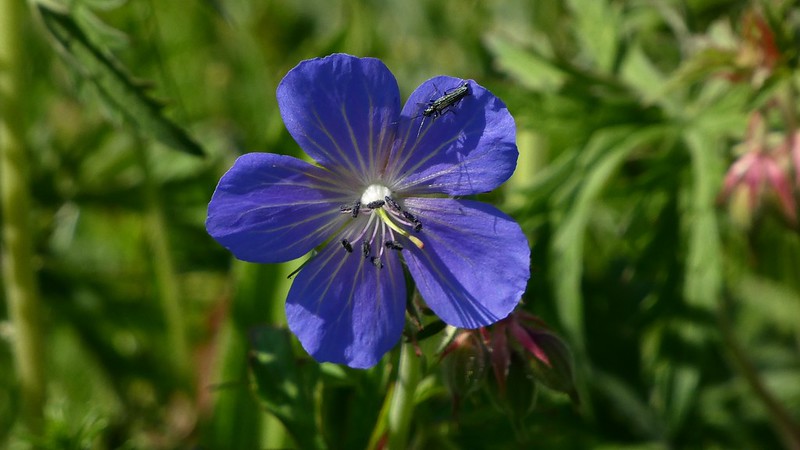
While most flowers struggle in the harsh conditions of cold Alaska, the Alaskan speedwell thrives. It can be distinguished from other flowering speedwell due to the lack of a long stem.
In fact, the Alaskan speedwell, which is also found in Yukon, is short and hairy, with small flowers. This has led to another nickname: northern kittentails!
2. Alpine Speedwell (Veronica Wormskjoldii)

Thriving in a moist alpine habitat, alpine speedwell is a hardy plant. It can survive even in the subarctic conditions of Alaska and Greenland, where it can grow over 12 inches long with individual flowers.
Blue flowers crown the alpine speedwell, which is sometimes known as the “hairy speedwell”, as the flower and stems are covered in delicate hairs.
3. American Speedwell (Veronica Americana)
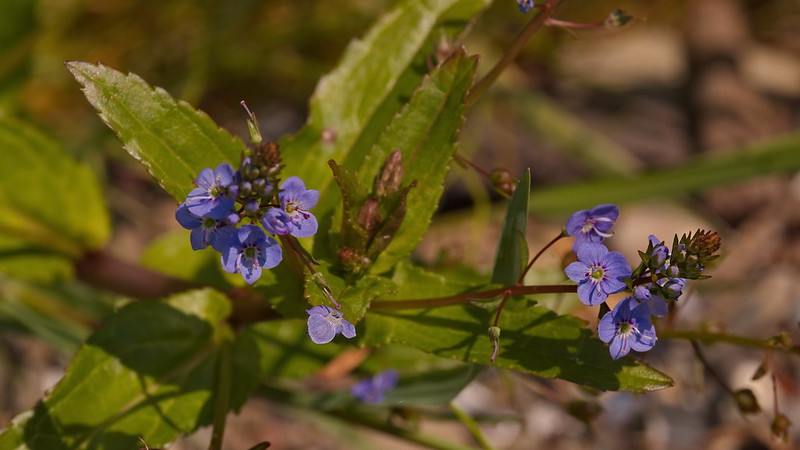
Native to Asia and North America, American speedwell grows in streams and low-lying land. Said to have a taste similar to watercress, American speedwell has historically been eaten and used in medicine .
When grown in clean water, every part of the plant apart from the roots can be eaten raw. Otherwise known as American Brooklime, this plant can be confused with Skullcap – the flowers can be distinguished by the shape of their stems.
4. Azores Speedwell (Veronica Dabneyi)

Once thought to be extinct, the Azores speedwell was rediscovered in 1999 on the warm and damp slopes of the Azores. It likes altitude, often found above 660 feet, and grows purple and white flowers from green foliage.
5. Banks Peninsula Hebe (Veronica Strictissima)

This type of Veronica, the Banks Peninsula Hebe, is only found in the Banks Peninsula in New Zealand. It was used as a treatment for dysentery, particularly during the Second World War. The Maori also made use of the Banks Peninsula Hebe, as a treatment for headaches and kidney troubles.
6. Broadleaf Speedwell (Veronica Austriaca)
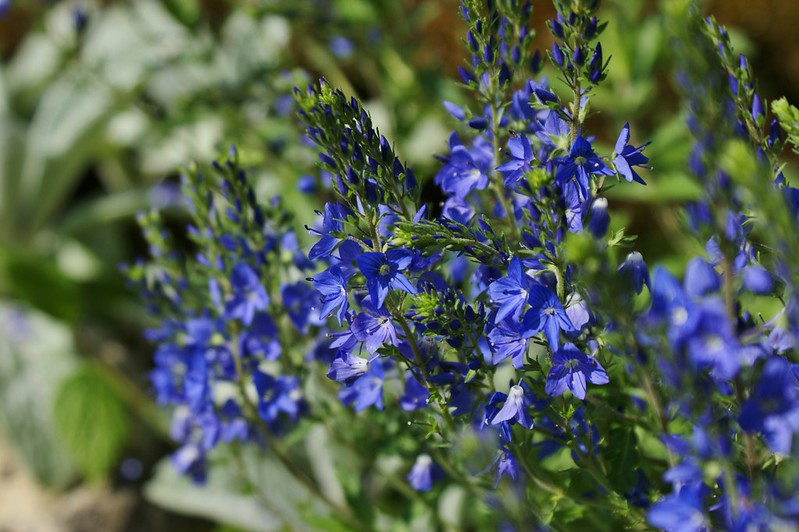
The broadleaf speedwell is native to Northern Europe, and grows in a flowering mound. Throughout summer, you can see the attractive and bright blue flowers blooming in Austria.
You can certainly spot broadleaf speedwell from a distance, as it grows in clusters of flowers up to 35 inches tall, and 24 inches wide.
7. Brooklime (Veronica Beccabunga)
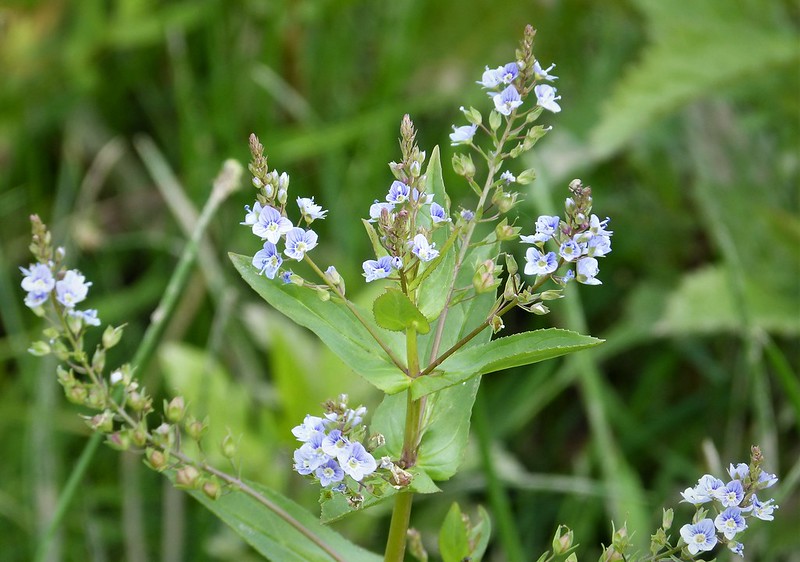
The Brooklime is a plant native to Europe, Asia, and Africa, preferring to grow in brooks and ditches. Brooklime is very easy to grow, but they do need plenty of water, and can have blue or pink flowers.
They were once used alongside scurvy grass and watercress as a potential treatment for scurvy. However, there’s nowhere near enough Vitamin C in Brooklime for it to be an effective medicine.
8. Corn Speedwell (Veronica Arvensis)
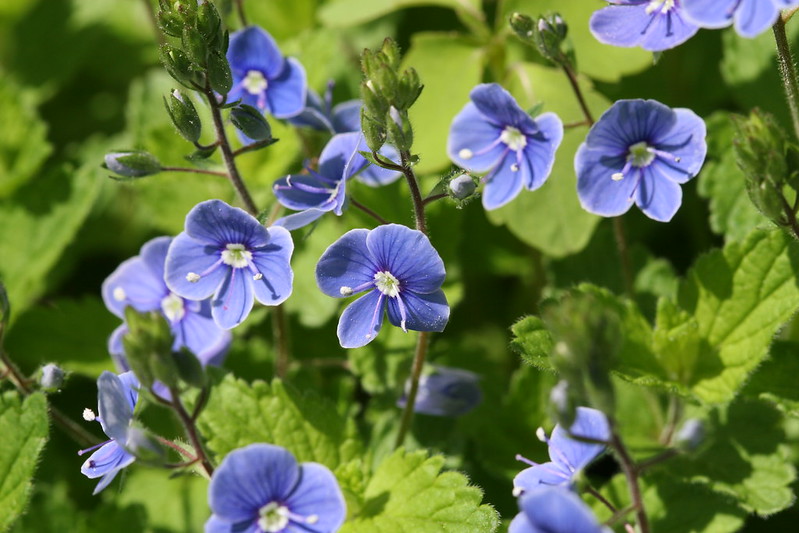
Native to Europe, corn speedwell is an annual herb that grows up to 16 inches tall. The leaves are oblong-shaped and green, topped with small violet flowers, and with a heart-shaped seed sack.
9. Common Field-speedwell (Veronica Persica)
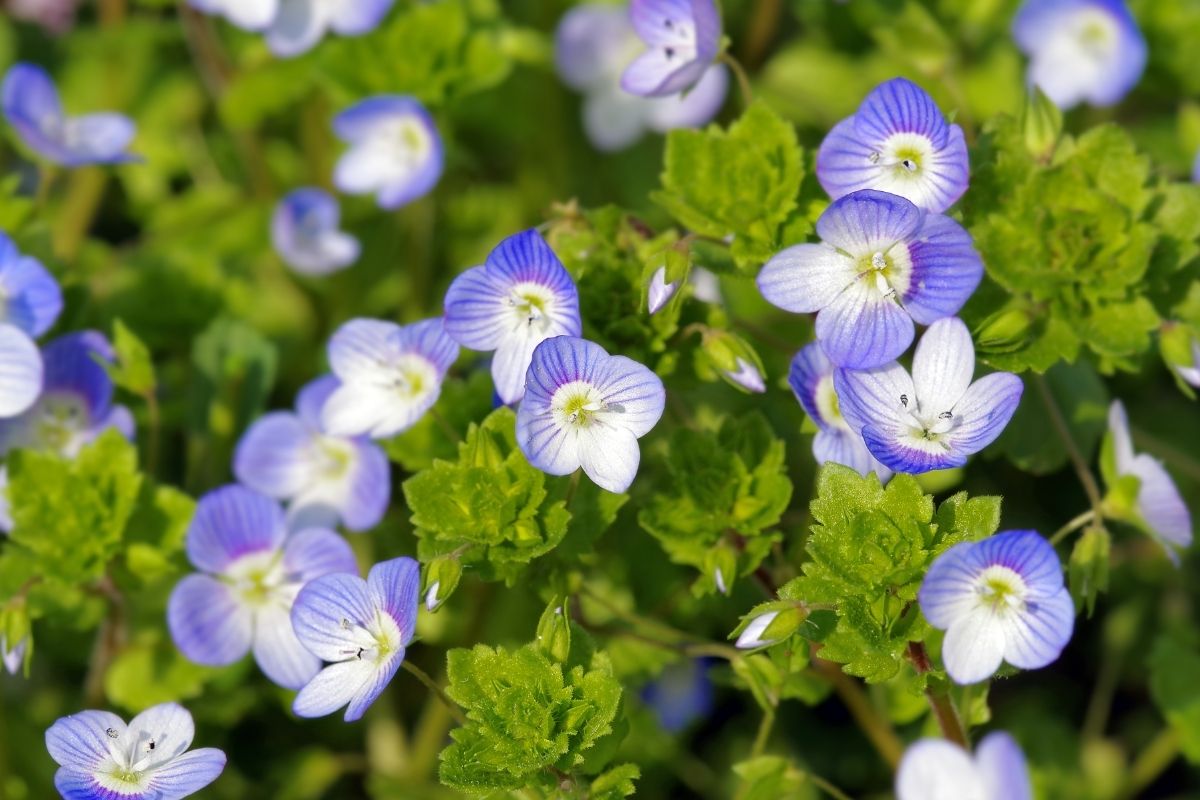
Common field-speedwell is often considered a weed, although it does turn up in plenty of gardens. Herbalist Mahomet Allum used common field-speedwell to treat heart conditions, and it’s also been used as a treatment for snakebites, hemorrhaging and asthma.
10. Corsican Speedwell (Veronica Repens)
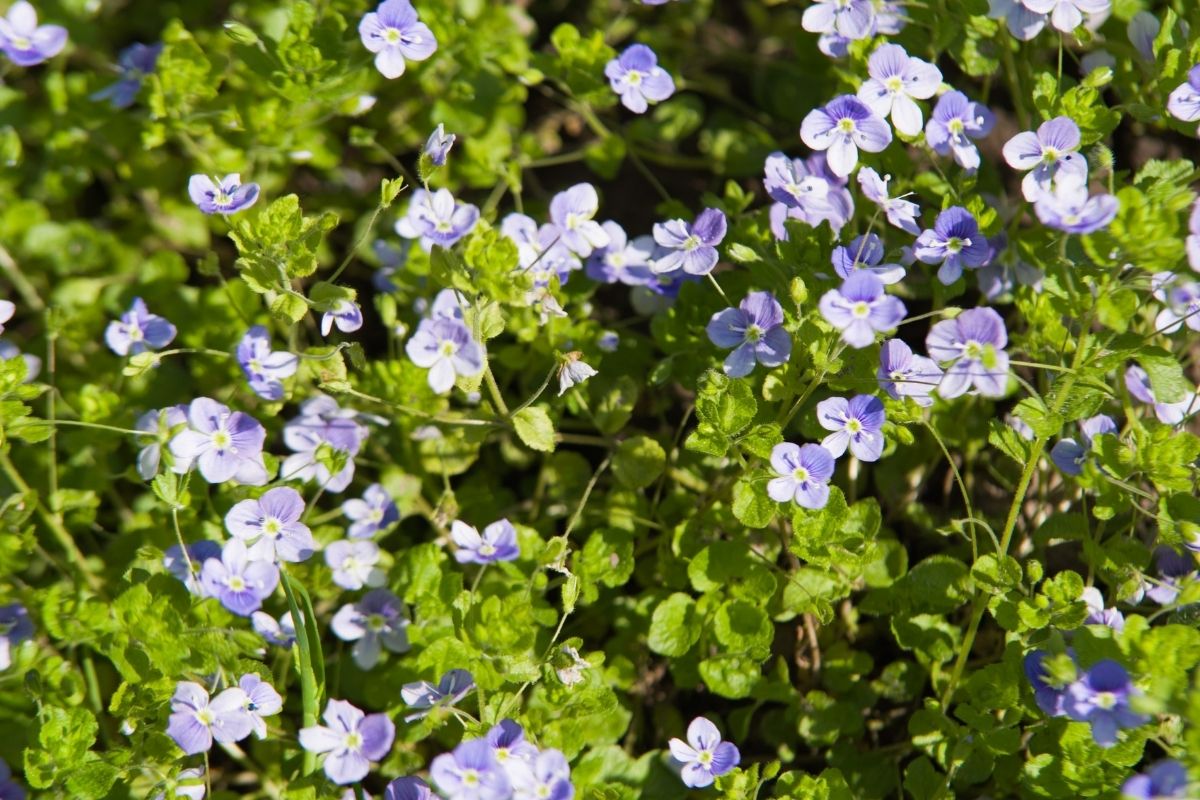
Native to Corsica and Morocco, the Corsican speedwell is also found in rock gardens, where it can be used as ground cover. Normally, the Corsican speedwell blooms in summertime with white flowers, but the “sunshine” cultivar produces purple blossoms.
11. Creeping Speedwell (Veronica Filiformis)
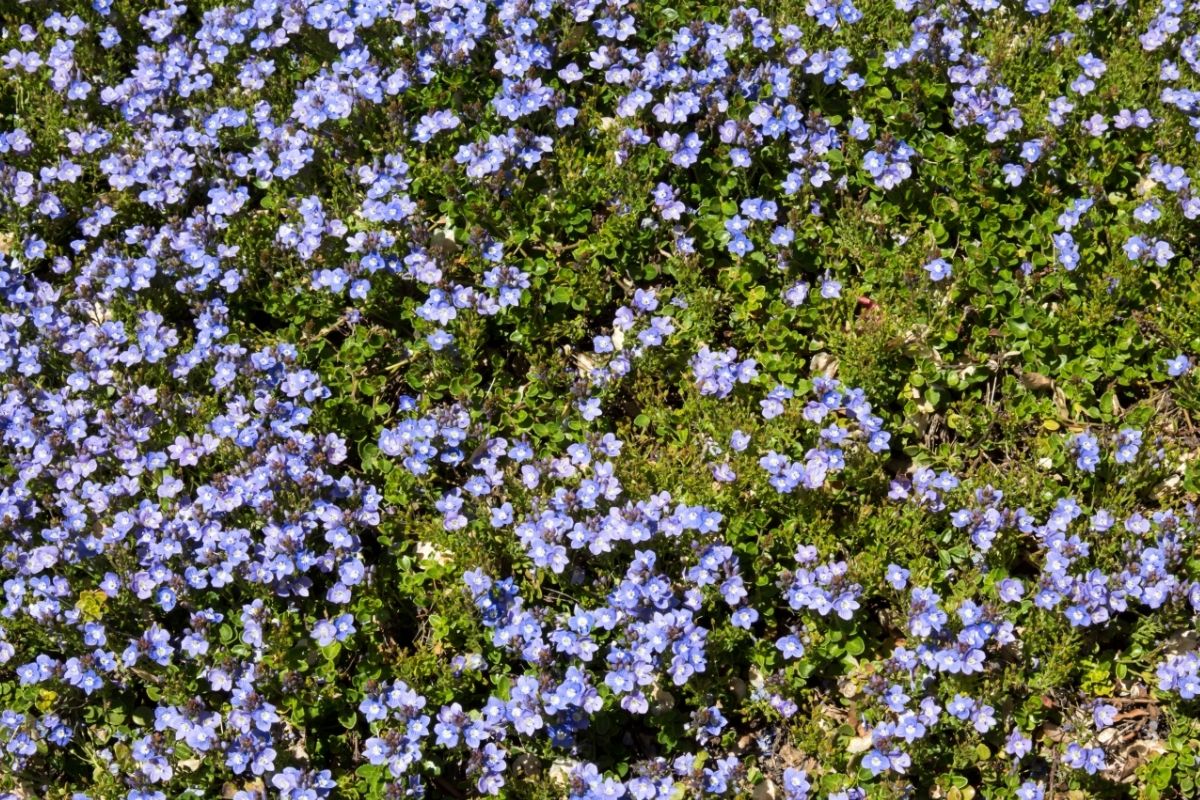
Known as creeping speedwell, slender speedwell, and threadstalk speedwell, this Veronica plant is a purple flowering plant originally native to north Turkey.
Sometimes seen as a pest, creeping speedwell has a very different reputation in Ireland. Viewed as a symbol of good luck, Irish travelers would sew the flower into their clothing.
12. Digger’s Speedwell (Veronica Perfoliata)
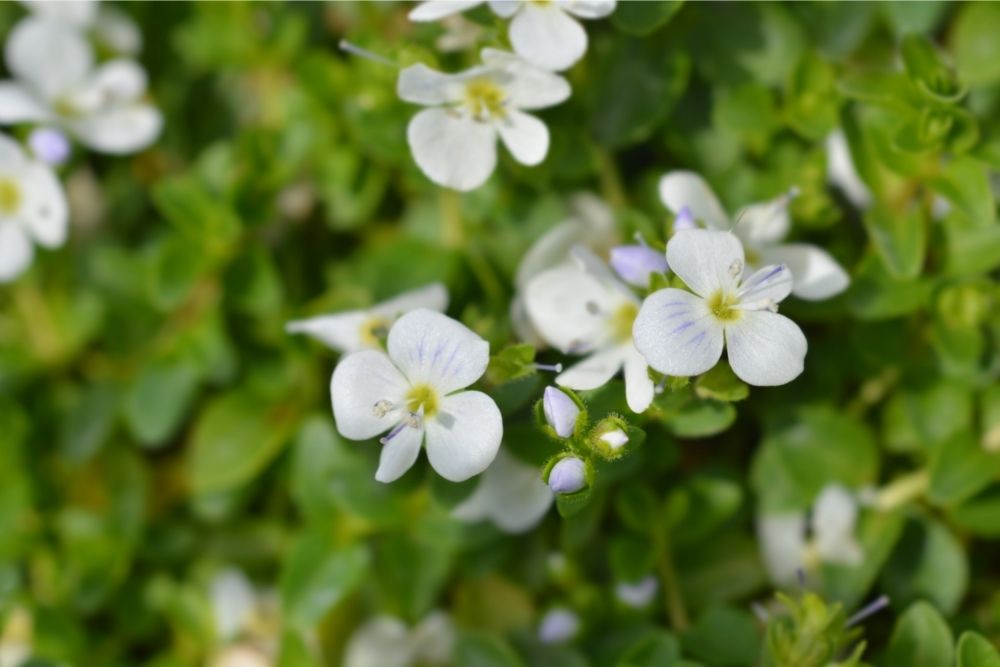
With gray foliage and vivid violet flowers, the Digger’s speedwell is often cultivated for use in the garden. But it originally had a much different use. When Digger’s speedwell was growing in the wild, it was thought to indicate the presence of gold. Unfortunately, this doesn’t seem to be true.
13. Gentian Speedwell (Veronica Gentianoides)

A perennial species native to the Middle East, Gentian speedwell prefers dry soil and full sun. It grows into thin spikes, which bloom with white or blue flowers in the summer. Gentian speedwell is often found in gardens, and can be grown as an ornamental plant.
14. Germander Speedwell (Veronica Chamaedrys)
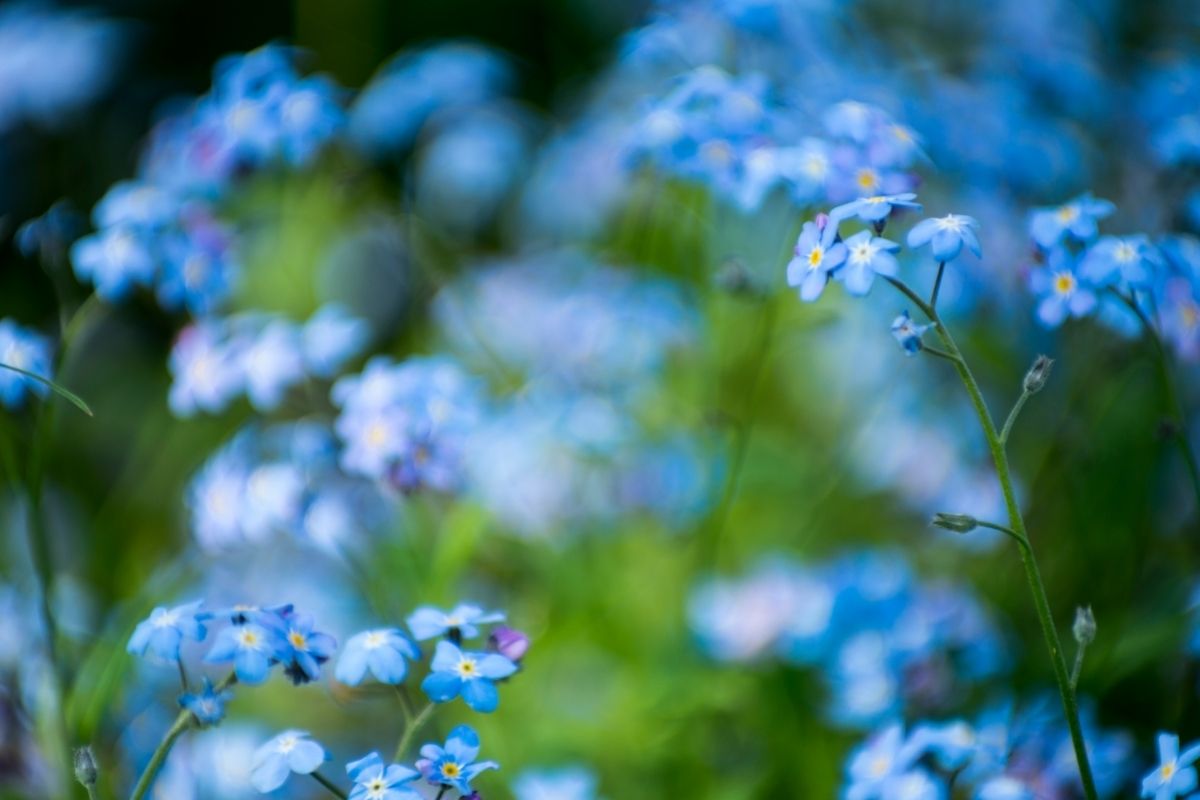
Pick a blue flowering Germander speedwell, and the blossoms of this plant will quickly wilt! In Germany, this has led to a perhaps slightly sarcastic nickname: “Mannertreu,” or “Men’s faithfulness”.
Despite this, Germander speedwell has been used to make tea and as a treatment for various disorders. In 18th Century England, a tea made with Germander speedwell was so popular that the fast-growing plant was nearly completely wiped out.
15. Green Field-Speedwell (Veronica Agrestis)
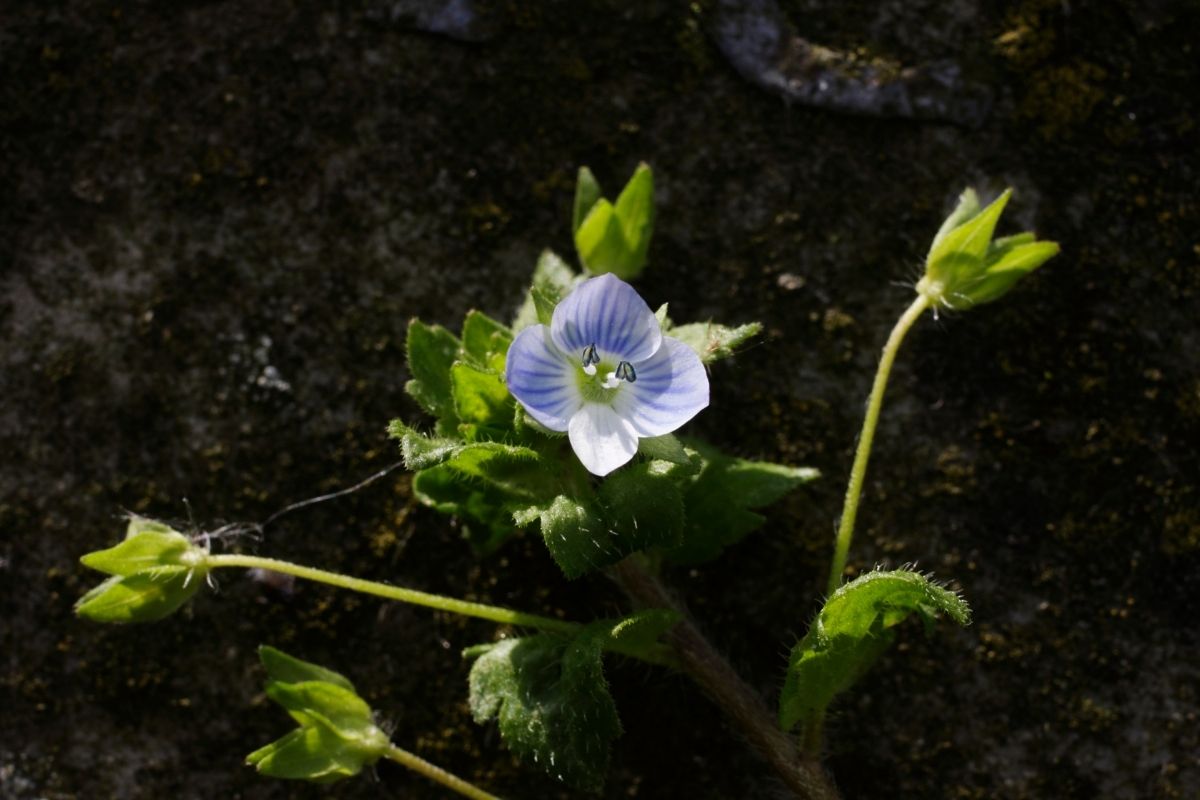
Green field-speedwell can be tricky to identify, and it isn’t quite as prolific a garden plant as some Veronica species. Its leaves and flowers are smaller than other types of speedwell, and its flowers are lavender colored.
You can identify green field-speedwell from Common speedwell by these flowers – they’re lighter and smaller.
16. Heath Speedwell (Veronica Officinalis)
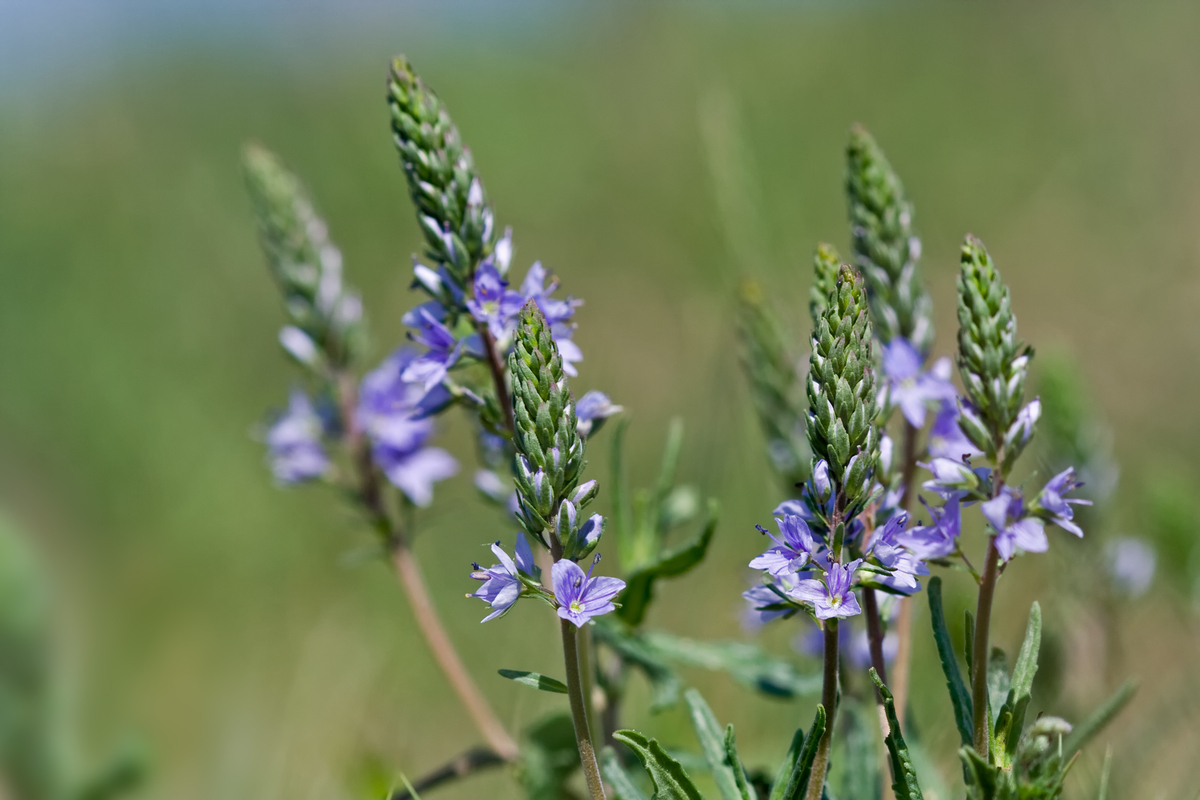
Also known as common gypsyweed, heath speedwell is a common plant native to Europe and introduced to North America. It flowers in the summer, with gentle and small violet blossoms growing from large stems.
Heath speedwell has been cultivated for medicine, but it’s mostly grown for tea, thanks to a slight bitter taste.
17. Ivy-Leaved Speedwell (Veronica Hederifolia)

The ivy-leaved speedwell is often found growing on walls, fences, and other structures, as the Eurasian plant has been introduced in many parts of the world.
Small blue flowers and a spreading stem that grows up to 2 feet long can be used to identify the ivy-leaved speedwell, which grows well when left alone.
18. Leafless Stemmed Speedwell (Veronica Aphylla)

The clue is in the name for what sets the leafless stemmed speedwell apart: this type of speedwell has no leaves at all, but instead has a large, leafless stem!
Leafless stemmed speedwell is found in rocky areas and stony mountains, and can be spotted in the Alps, Carpathians, and the Iberian Peninsula. The flowers of the leafless stemmed speedwell are light blue, with darker blue markings.
19. Rock Speedwell (Veronica Fruiticans)
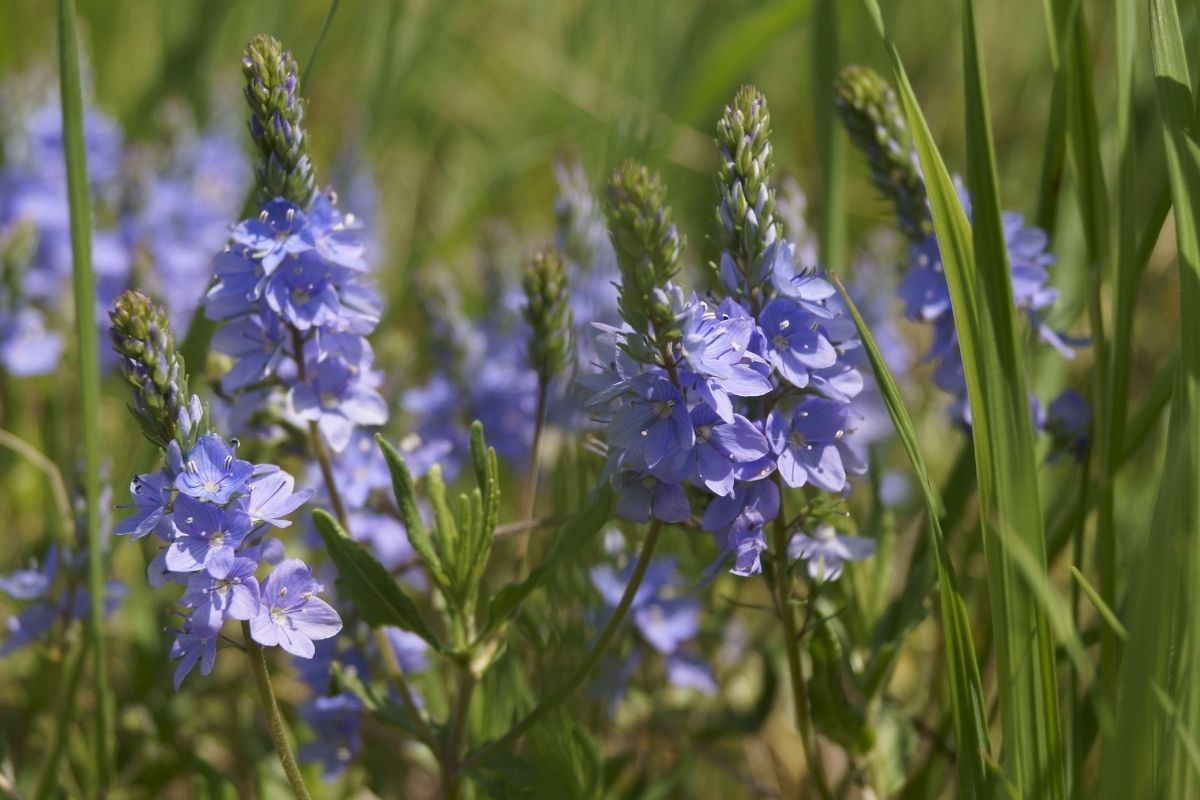
You may see the rock speedwell in rock gardens and alpine gardens, where it’s grown for its use as ground cover. Native to almost every country in Europe, the rock speedwell adapts to match the conditions. In the municipality of Bardu, Norway, the rock speedwell is the official flower.
20. Spiked Speedwell (Veronica Spicata)
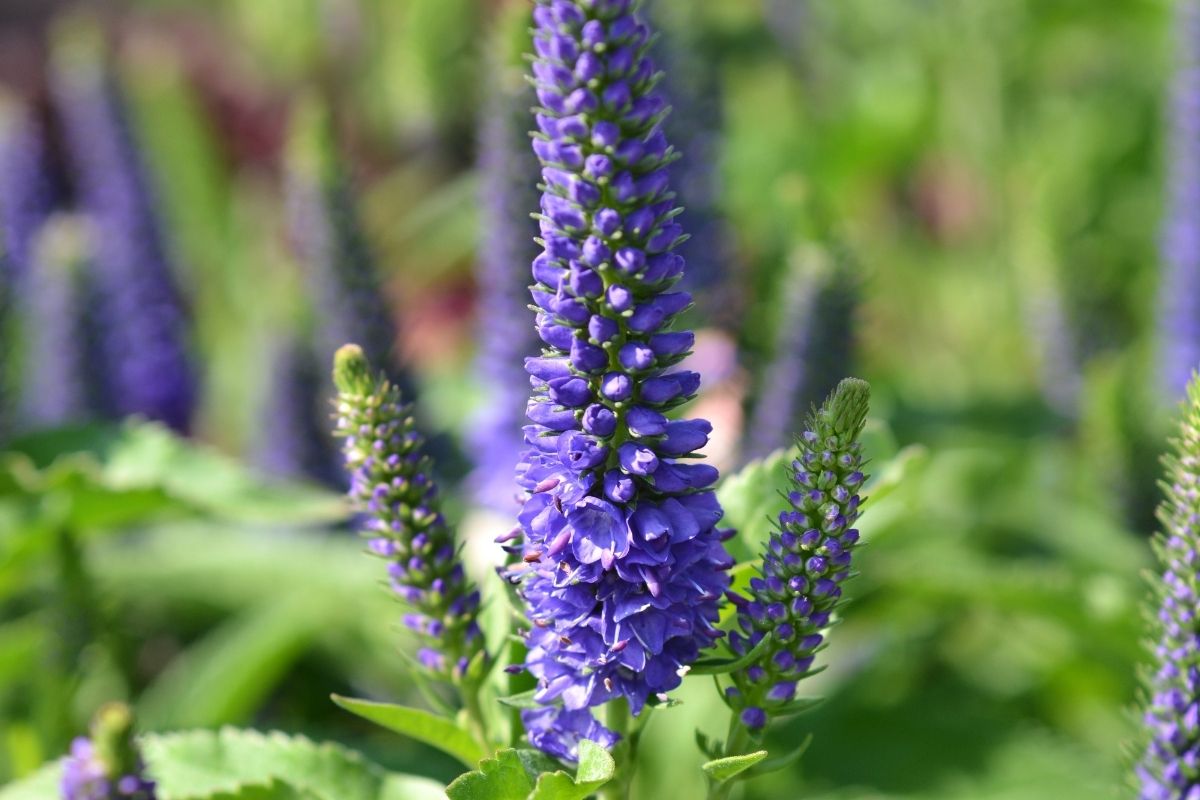
The flower of the British county of Montgomeryshire, the spiked speedwell can grow up to 3 feet tall, with foot long flower spikes. Blue, pink, white, and purple flowers can all be found on the spiked speedwell, which is a protected species in the UK. It grows best in partial shade, and well-drained soil.
21. Veronica Arcuata
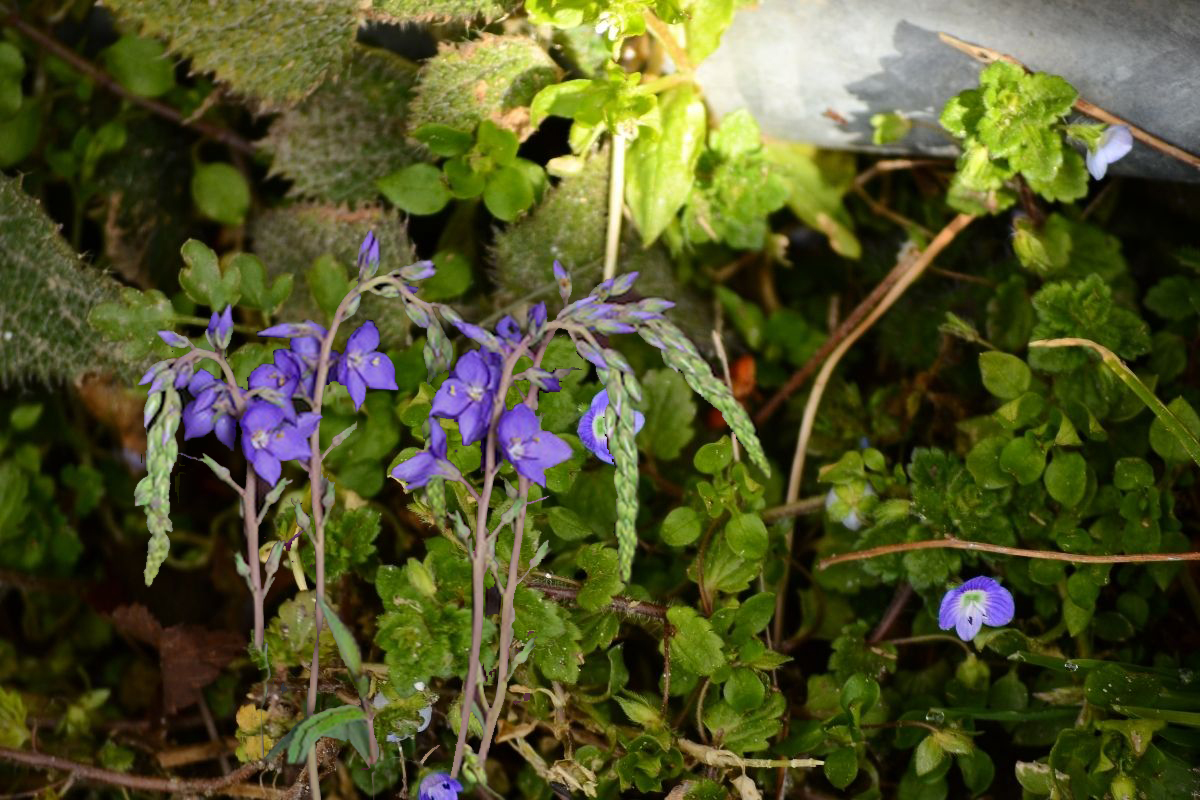
The Veronica arcuate doesn’t look like other types of Veronica, which is why it was only recognized as a member of the family in 2007. Native to New South Wales, the Veronica arcuate takes root in the light soils of eucalyptus woodland. It has distinctive curved leaves, which led to the name “arcuata”, from the Latin phrase meaning “bent like a bow”.
22. Water Speedwell (Veronica Anagallis-Aquatica)
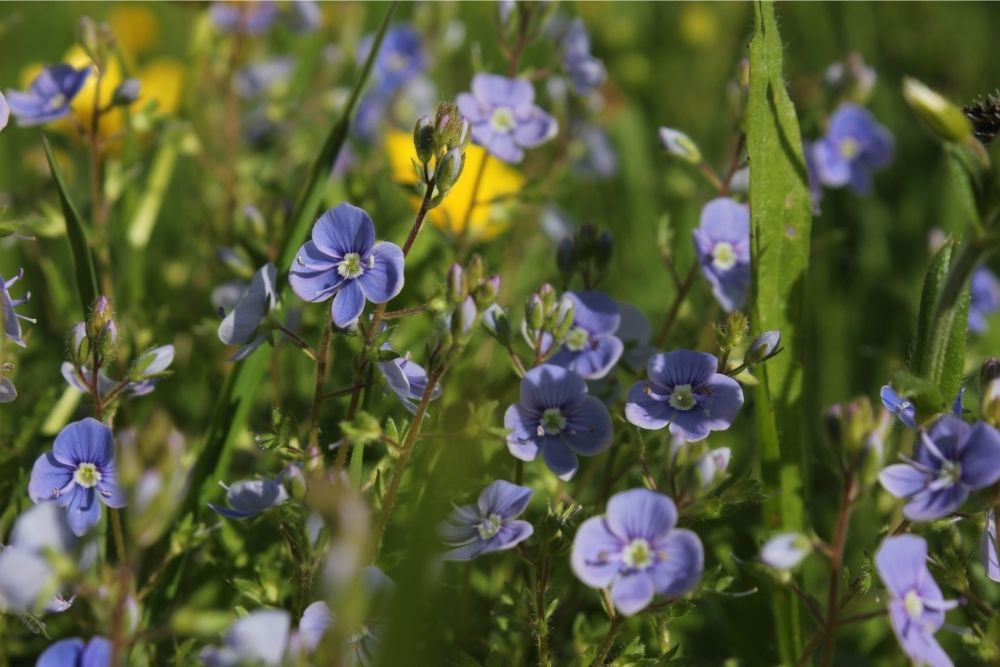
The perennial Water speedwell is wide-spread, with a native range that’s not yet known. Growing best in moist and wet environments, the Water speedwell can be found in ponds and along the banks of streams.
It can have large, white flowers, but also comes in blue, lavender and violet, with distinctive purple lines at the base. Despite the incredible range of the Water speedwell, it’s listed as threatened or endangered in several parts of the United States.
23. Wood Speedwell (Veronica Montana)

Found in Europe and Northwestern Africa, the Wood speedwell likes to make its home in the damp. It can often be found in old deciduous woodland, and has pale lavender flowers.
Final Thoughts
Found in many climates across the world, there are many different varieties of the Veronica plant. Although typically blossoming with pretty purple and blue flowers, the Veronica is frequently thought of as a weed.
But for others, the Veronica plant adds a natural (and easy to grow) beauty to the garden. Spend time in a variety of conditions, from rocky gardens, to flowering fields, and even damp riverbeds, and you’re likely to see a speedwell growing. They’re just that versatile!
Editor’s Recommendations
50 Fantastic Different Types of Blue Flowers (Including Pictures)







